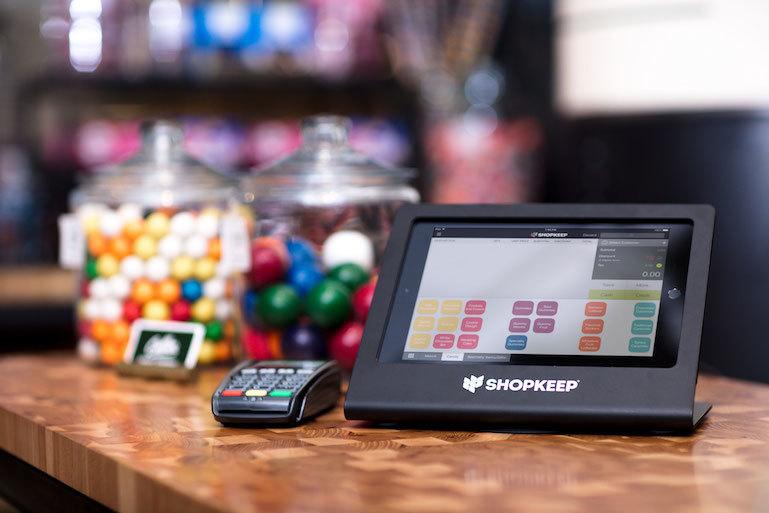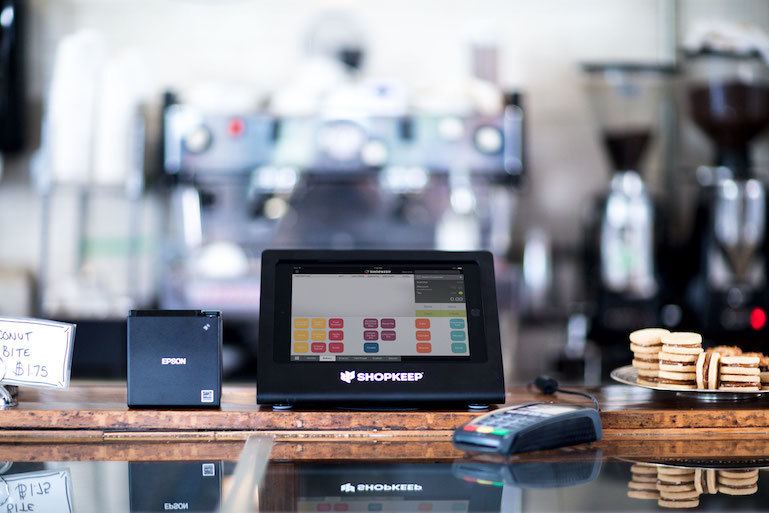
Improving Decision-Making with POS Systems (How-To)
Your point of sale (POS) system can act as your right hand when it comes to managing and understanding your business.
If you’re like most retailers and food service businesses, your POS is the hub of your operations, whether that’s running sales, managing inventory, or tracking employees. The data your POS generates and collects while performing these tasks, as well as others, reveals what’s going on behind the scenes of your business. Smart retailers know that the best way to achieve long-term success is to use this information to make informed decisions that drive sales and increases the overall performance of your business.
If using data to make decisions is new to you, don’t worry. We’ll show you how to do it, and why it’s essential, in this post.
How Can Your POS Help Decision Making?
As a part of its operation, a modern cloud-based POS system collects data related to significant areas of your business, including transactions, inventory, employees, and more. For savvy business owners, that data is a massive resource they can leverage for strategic decision-making.
Plus, due to the always-on nature of cloud POS systems, you can reference this data at any given time. You don’t even need to be in your office to do it, either. All you need is a computer and an internet connection.
Before going further, it’s worth explaining why it’s essential to use data to inform your business decisions. Often, it’s easier to follow our gut instinct and make choices based on what feels “right.” Unfortunately, this can lead to flawed decision-making for a variety of reasons. The most obvious is that your gut can be wrong. You don’t inherently know all the facts for a given situation. That’s where data, reporting, and analytics come into play. They give you the whole picture, allowing you to consider all of the facts before deciding anything.
If you’re concerned that reading reports might be too confusing, don’t worry. You won’t need to brush off that college statistics textbook before you can get started. Most modern POS systems are designed for regular business owners just like you. That means the reports are easy to read and use. Reports are also usually focused on a few key pieces of information, allowing you to find what you need quickly and then get back to your regular day-to-day.
SEE ALSO: Everything You Need to Know About In-Store Retail Analytics
What Kind of Decisions Can a POS Help You Make?
The reach of your POS goes far beyond your countertop. Its data shows you how all of the major components of your business work together. What happens in one part can easily influence what happens in another. But to help you understand the specific decisions a POS can help you make, let’s look at each major area of a typical business independently.
Sales/Transactions
Since your POS is where you actually ring up sales, it only makes sense that it should help you understand sales performance. And that goes far beyond gathering basic information like how much you sell in a day. Key sales metrics like gross profit (how much money you make from a sale after production and sales costs) and the profit margin (the percentage of a transaction that you retain as profit) is laid out in your POS system’s reports. You can use this information to keep track of your profitability and make sure the inventory you have is actually helping you generate revenue.
These reports can also help you identify your best and worst selling products, departments, and locations, among other pieces of information.
Inventory Management
Checking sales reports is a great way to identify your most popular products. Once you what they are, the next step is to ensure you have enough stock in your inventory to handle demand. That’s where inventory reports come in to play. They clearly show the quantity of each product that you have in stock, so you know when it’s time to reorder. Plus, your POS can supply you with big picture information like the overall value of your inventory, helping you get a grip on your current cash flow situation.
Loss Prevention
Make sure the numbers add up when you perform an inventory count. If you see that your POS says you have more stock than what is physically in your store, you likely have an inventory shrinkage problem. Be aware that there are a variety of different ways that loss can occur so check things like supplier invoices, staff hours/schedule, register activity, and your other security measures to identify the reason for the loss.
Employee Hours and Shifts
Your POS can tell you who your top staff members are and what days are your busiest. Use sale by hour and sales by employee reports to make this determination. Then schedule your best salesperson to work at the busiest time of your work week to increase profits. On the other hand, you can also see which staff members who aren’t performing as well and set up training and coaching sessions to help them improve.
Marketing
Gift cards, email receipts sent to customers, and loyalty programs are all marketing tactics that can be managed through a POS. You can create customer profiles in your POS to track their purchase and shopping history with you. Easily monitor the number of customer email addresses you collect to measure your email list growth. You can even track the number of gift cards you sell and see when people pay with them to evaluate the success of your gift card program.
It’s clear that with a POS, you can quickly gain insight into almost every aspect of your business. But what about the POS system’s traditional counterpart, the electronic cash register? Can it too provide business owners and managers with access to critical business data?
Is a POS Better at Decision Making Than a Cash Register?
While the traditional electronic cash register is undoubtedly a popular device, it can only do one thing: ring up sales. On the other hand, a POS is an actual system comprised of software and hardware that allows you to serve your customers and run your entire business at the same time.
POS software provides business owners with analytics and reporting capabilities that a cash register does not have. These analytics tools translate the data that’s generated by the system into easy-to-understand reports that keep you aware of how your business and staff are performing, among other things. If you want to know what days are busiest, which payment methods are most popular, or what your best selling item was last week, it’s easily accessible within your POS.
Cash registers, on the other hand, don’t have this kind of capability built in. You would have to use spreadsheet software like Excel or even track information by hand to gain the level of insight that a modern POS system provides out of the box. And if you wanted daily reports on how your business is operating, you would need to be at your business every hour of every workday updating your spreadsheets. This would be a full-time job unto itself and is likely impossible to stay on top of in the long run.
SEE ALSO: The Great Debate: Cash Register vs. POS
Here’s a typical example to further illustrate the difference between the two technologies. I mentioned before that POS systems can automate inventory management, which is a massive time-saver for small business owners. Cash registers don’t have this kind of functionality built in, so to manage inventory, you need to count all of your stock by hand regularly. This tedious process can take hours, and since it’s done by hand, it’s mistakes are common, leading to inaccurate data. Why do all of this when a POS is a cost-effective and easy-to-use option that does that for you automatically?
A cloud-based POS offers more significant advantages over a cash register. Since it all it requires is an internet connection, you can get to your analytics from basically any computer. This means your business data is available to you at home, in a coffee shop, or even while you’re traveling. This empowers you to make when it’s most convenient for you.
Additionally, cloud-based POS systems tend to be more modern and user-friendly than traditional POS systems and cash registers. This can help you learn the system, and start making informed decisions, faster. Some POS systems, like ShopKeep for example, even include a mobile app like ShopKeep Pocket. This app gives you access to critical business data on your smartphone so you can make decisions on-the-go.

How Do POS Based Decisions Help Improve Business?
Now that you understand why a POS is a better tool for the decision-making process and the decisions it helps you make, it’s time to put the information it gives you to good use. With the data you get from your POS, you’re equipped to manage your business and better prepared to react to future challenges.
You can’t be in your business all the time so you can count on your POS to consistently track data even when you aren’t there. Use these reports to your advantage to make informed decisions that grow your business day-in and day-out.
For example, you might see that you aren’t selling as many gift cards as you were at this time last year. To resolve that, you can create a particular marketing campaign designed to boost gift card sales. Or you could figure out which products you currently sell that offer the best profit margins and place those items at the front of your store as a way to make up the difference in sales.
If it’s not clear by now, the right POS system can be a game-changer for your business. The insights it can provide from your sales data alone offers an invaluable view into the inner workings of your business. By ignoring these aspects of your POS software not only are you utilizing just a fraction of your POS system’s capabilities, but you’re also doing yourself and your business a disservice.
Want to try ShopKeep for yourself?
Just answer a few easy questions.
Need help finding the right point of sale?
Just complete the form. We’ll call you right back to explain how ShopKeep can work for you.
Hit the ground running.Sprinting, in fact!
Read our free, comprehensive guide, Small Business 101, to learn all you need to know about starting a thriving business.

